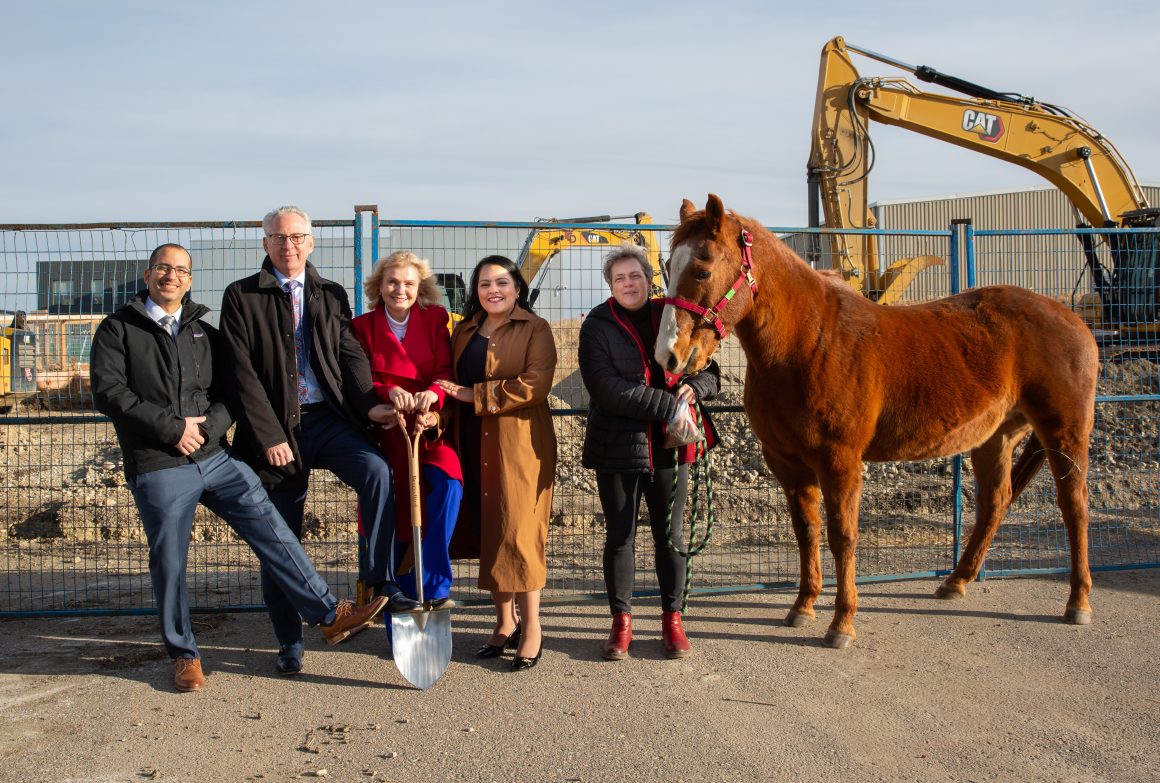
U of C Vet Med receives increased provincial funding for teaching and research facilities
By Eula Mengullo, January 30 2024—
The Faculty of Veterinary Medicine has seen an increase in investment from the provincial government to aid with infrastructure building while increasing faculty and enrolment capacity.
In an interview with the Gauntlet, faculty dean, Dr. Renate Weller, speaks about the host of benefits this investment would bring to the program.
“I think ever since COVID-19 hit, everyone knows that animal health is very closely linked to public health,” said Weller. “And obviously we are here to make sure that people’s food is safe and that the animals who provide us with that food are getting the health care they need.”
Weller remarked that the shortage of veterinarians in the province could pose significant challenges, especially for a province where the agricultural industry is a significant contributor to the economy.
“We are looking at problems with veterinary oversight of beef, poultry and pork production,” said Weller. “And I think we all agree that we want safe food, and for our animals to have the care they need.”
It is on this basis — along with an impact study done by the Alberta Veterinary Medical Association — that the government decided to endow funding for the faculty, being that it is the only veterinary school in Alberta. A portion of this funding also goes towards developing teaching and research facilities at W.A. Ranches, a 19,000-acre cattle ranch donated to the university in 2018.
“We put a proposal forward and said that we think we can double our student numbers,” said Weller. “And the government very kindly agreed to this.”
While its primary goal is to increase student numbers, the investment also includes a generous amount of infrastructure funding to expand space capacity. Additionally, it would allow for the increase of faculty and staff.
“We need high quality teaching faculty and staff to provide our students with the best possible student experience,” said Weller.
One of the buildings set to be established by the fund is the Veterinary Learning Commons Facility at the Spy Hill campus. Weller remarked that this project has received intensive consultation with faculty and alumni, although the majority of which were centred on students and student experience.
The project is currently in its consultation phase where students are being asked about what these new spaces should look like — including colour schemes and ambience — and what they should contain.
“I have to give our students a lot of credit, they were super interested and they wanted to have a say in it,” said Weller.
“I want a new building where the students can feel at home away from home,” she continued. “So that’s the idea.”
The funding also aims to create a full-service veterinary diagnostic laboratory which would benefit Alberta livestock producers. Weller highlighted that this laboratory would serve as a surveillance system while helping veterinarians diagnose diseases and formulate optimum prognoses.
“Basically what [the diagnostics services unit] is, is this is where dead animals come in as well as samples from diseased animals […] and what this does is it is a surveillance mechanism for disease,” Weller explained.
“So if a disease breaks out you want to be on top of that as quickly as possible, to contain the spread.”
By the Fall semester of 2025 student enrolment is expected to increase to 100, twice its current size. In 2029, the faculty is expecting to have doubled their graduates. While far from ideal numbers, Weller recognized that this is a crucial and substantial first step.
“It’s not enough, but it’s a long-term, hefty contribution we can make,” she said.
“We are thinking of developing additional programs where we can help with upskilling people through micro-credentials, help bring in international veterinarians into the country and help them fit into the Alberta workforce market.”
“We are in essence providing at least a big part of the long-term solution to the veterinary shortage,” she continued.
In her closing remarks, Weller welcomes and encourages interested students to come out for a tour of the faculty.
“We love showing what we do, so if any groups of students would like to come out for a tour, let us know. Because it’s not only our campus, it’s the university’s campus, so we would be delighted to welcome groups of people to have a look around.”
To learn more about the Faculty of Veterinary Medicine and their research, visit their website.
